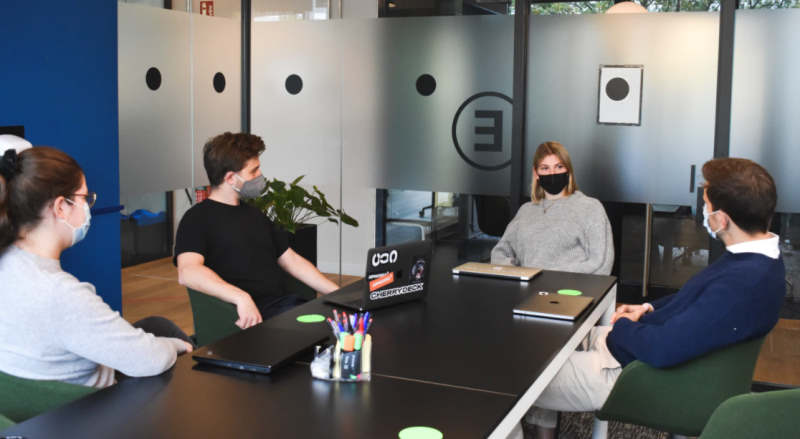As the pandemic raised health and safety concerns, employers began to shift employees to remote work environments.
Employees already working under hybrid agreements or in jobs that could be safely done from home suddenly found themselves working from home full time. While most of this shift has been mandated due to government restrictions and guidelines, some workers are finding the prospect of returning to the traditional office unappealing.
The ability to save time and money on commuting and work attire, as well as getting more time to relax and spend with family, has made working from home more attractive. Even though a recent survey of U.S. employees revealed 55 percent feel safe returning to the office, this varies between geographic location, office set-up, and age range. Other employees are eager to return to get the social interaction they need from peers and other office arrangements like coworking near me.
Safety Concerns
U.S. employee survey results indicate 32 percent feel unsafe returning to a traditional office environment. Another 13 percent are unsure. This is a sizable percentage of workers who are either adverse or hesitant to do their jobs around others if it means potentially being exposed to COVID-19.
Only one-fifth of workers can return to private offices, one of the factors impacting how employees feel about safety. Among those who have to return to open floor plans, 46 percent feel safe. The percentages rise slightly for workers in cubicles and mixed spaces, at 49 and 52 percent.
Geographic location is also playing a role in how comfortable employees feel. Workers in less densely populated areas tend to feel safer, with 64 percent in the Midwest indicating they are ready to go back to the office. In the Northeast, that percentage falls to 36.
Perks of Working from Home
Besides safety concerns, another driver of the hesitancy to return to the office is the perks associated with working from home. During the pandemic, a lot of workers have discovered that it is possible to perform their jobs in the same capacities from home. Working from home means they no longer have to spend time driving or commuting to the office.
The stresses and expenses associated with commuting are eliminated by remote work. Employees can spend the time they would be commuting with family or relaxing. They have more time and flexibility to run errands, go to the gym, or work on personal hobbies.
Social Interaction Needs
Converting all jobs into remote work is currently impractical, so the traditional office will likely remain for some time. Some employees prefer to work around others, brainstorm, and socialize in person to get their jobs done. It is more probable that the transition to working from home will accelerate, but in waves.
There will be workers who will continue to prefer to work for traditional employers and in offices. Others may realize COVID-19 has changed their priorities and now is the time to break free from traditional employment by freelancing or starting home-based businesses. Another group may pursue 100 percent remote employment with start-ups and other conventional employers.
Even though the coronavirus has changed how employees and employers view work-life balance and remote work, the traditional office will probably remain for a while. The opportunity to socialize with peers, the value of face-to-face interactions, and diminishing safety concerns will keep it in place. Still, an increasing number of workers will demand more flexible and work-from-home arrangements.
